

For our third full day in Hawaii, we would be taking the bus over to downtown Honolulu and exploring some of the sights that the city had to offer. Honolulu has a total metropolitan area population of about a million people which makes it roughly the 50th largest city in the United States. It's by far the largest city in Hawaii though and Honolulu's location in the middle of the Pacific Ocean makes it one of the most isolated cities in the entire world. Honolulu's unique geographic spot halfway between Asia and the Americas has meant that it's always been a crossroads location combining together peoples from around the world, a diverse mixing pot of native Hawaiian culture as combined together with additional European, American, and East Asian elements. We would be visiting some of the political and cultural institutions hosted in downtown Honolulu, starting with the state capital building and then proceeding on to the Iolani Palace, Chinatown, and eventually the Bishop Museum.

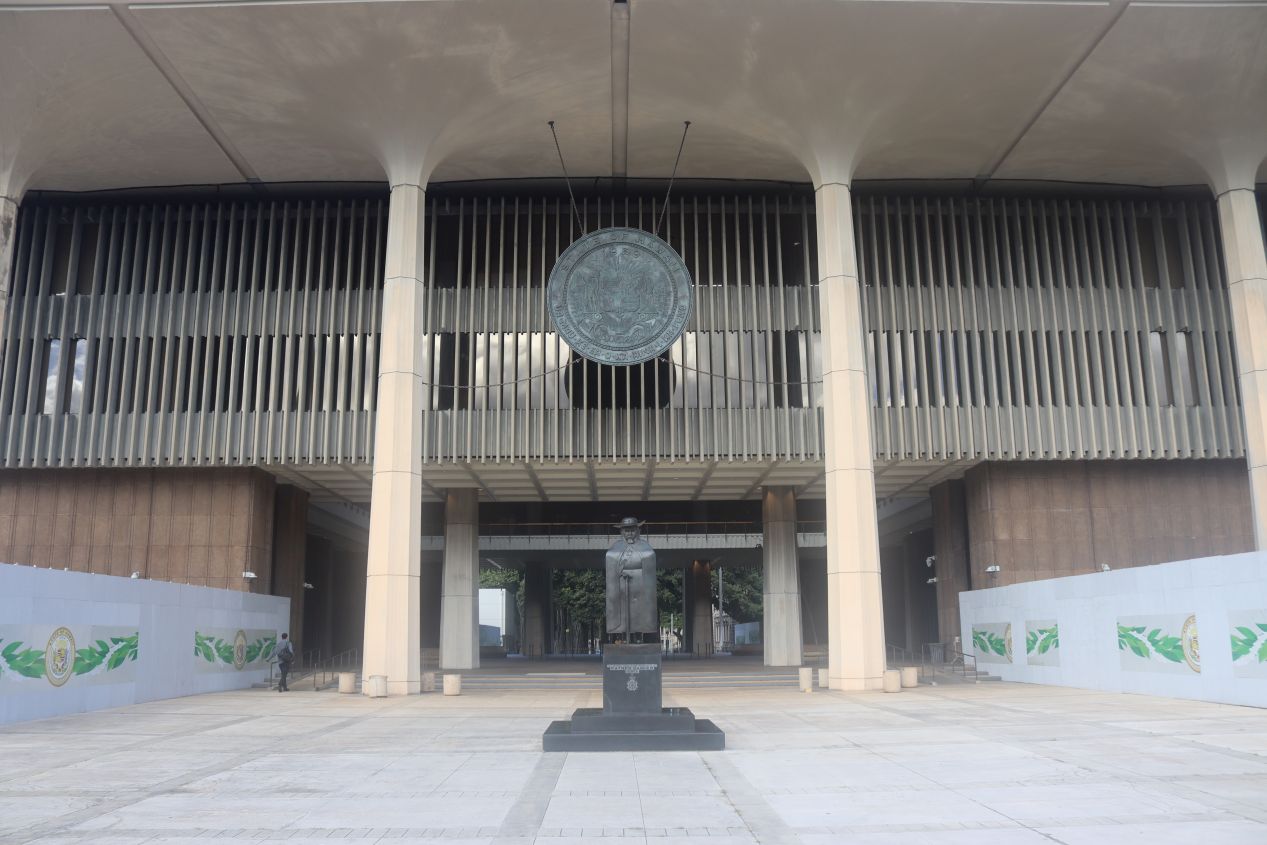


We began this morning by getting breakfast near our hotel in Waikiki before hopping on a local bus to take us a few miles northwest into downtown Honolulu proper. Although this was a short ride that only took about 15 minutes, I get the impression that many tourists spend their whole visit to Oahu in Waikiki (or visiting other beaches elsewhere on the island) and never find their way into Honolulu proper. We found that the compact downtown area had more of a local feel to it, full of people heading to work in the many high rise businesses that clumped together here. There were also a good number of political and cultural institutions to visit, starting with the Hawaii State Capitol building pictured above.

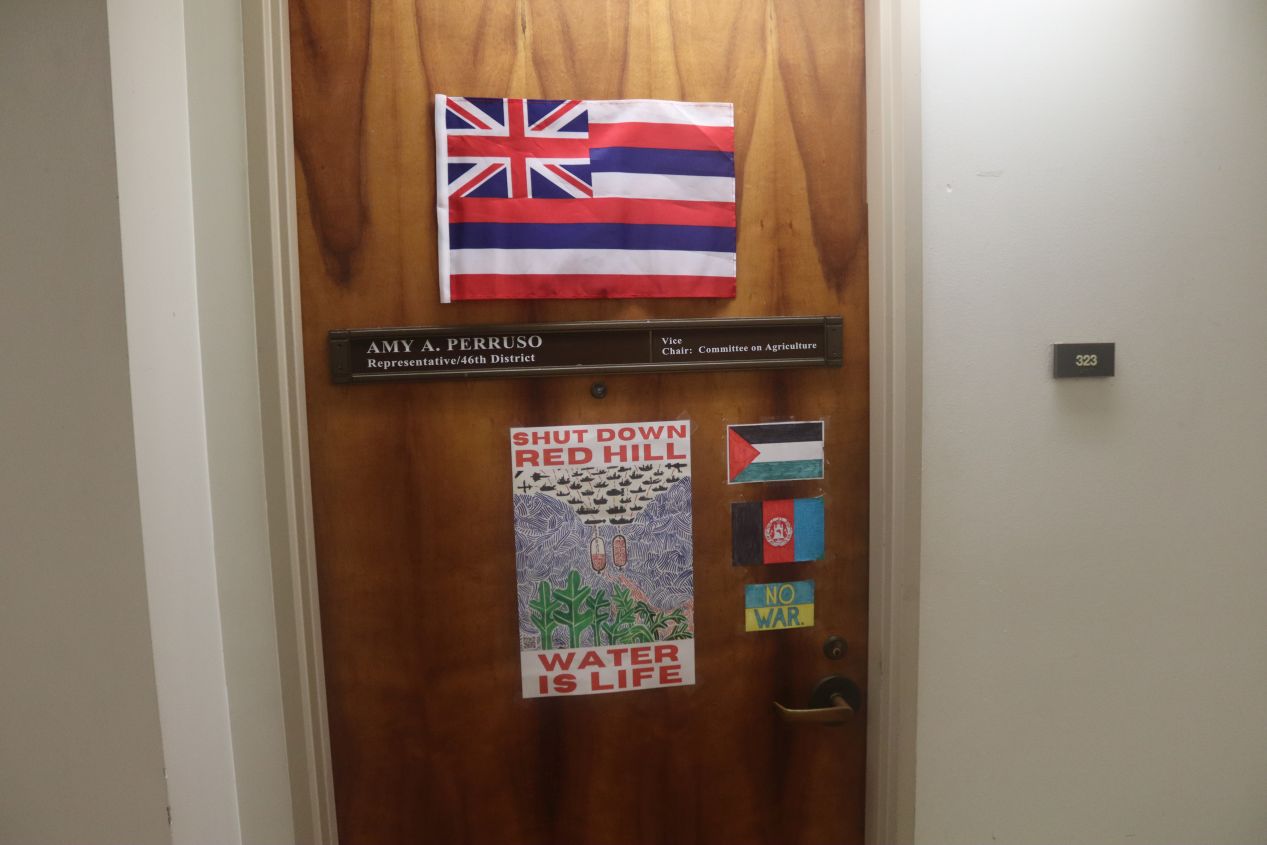


Hawaii was the 50th and final state to join the USA back in 1959 which meant that the state capitol building by definition had to be a lot more recent than its peer institutions elsewhere. Longtime readers of the website will know that I've made somewhat of a habit of visiting different state and provincial legislative buildings over the years, and most of the state capitol buildings in the United States were designed to imitate the national Capitol Building in Washington DC. That was emphatically not the case here in Hawaii, where the state capitol had a completely different architectural style inspired by native Hawaiian design patterns. This building is surrounded by columns intended to represent palm trees with eight columns in four rows at either side of the building to symbolize the eight main Hawaiian islands. There's normally a reflecting pool that runs around the outside, intended to symbolize the Pacific Ocean, but which was under construction at the time of our visit. The center of the building, where a dome tops most American state houses, was instead left open to the sky to allow sun, wind, and rain to enter. We had arrived right as the state capitol was opening for the day at 9:00 AM and it was a bit wild seeing how all of the offices for the individual representatives were located off this central well which was completely open to the outside.

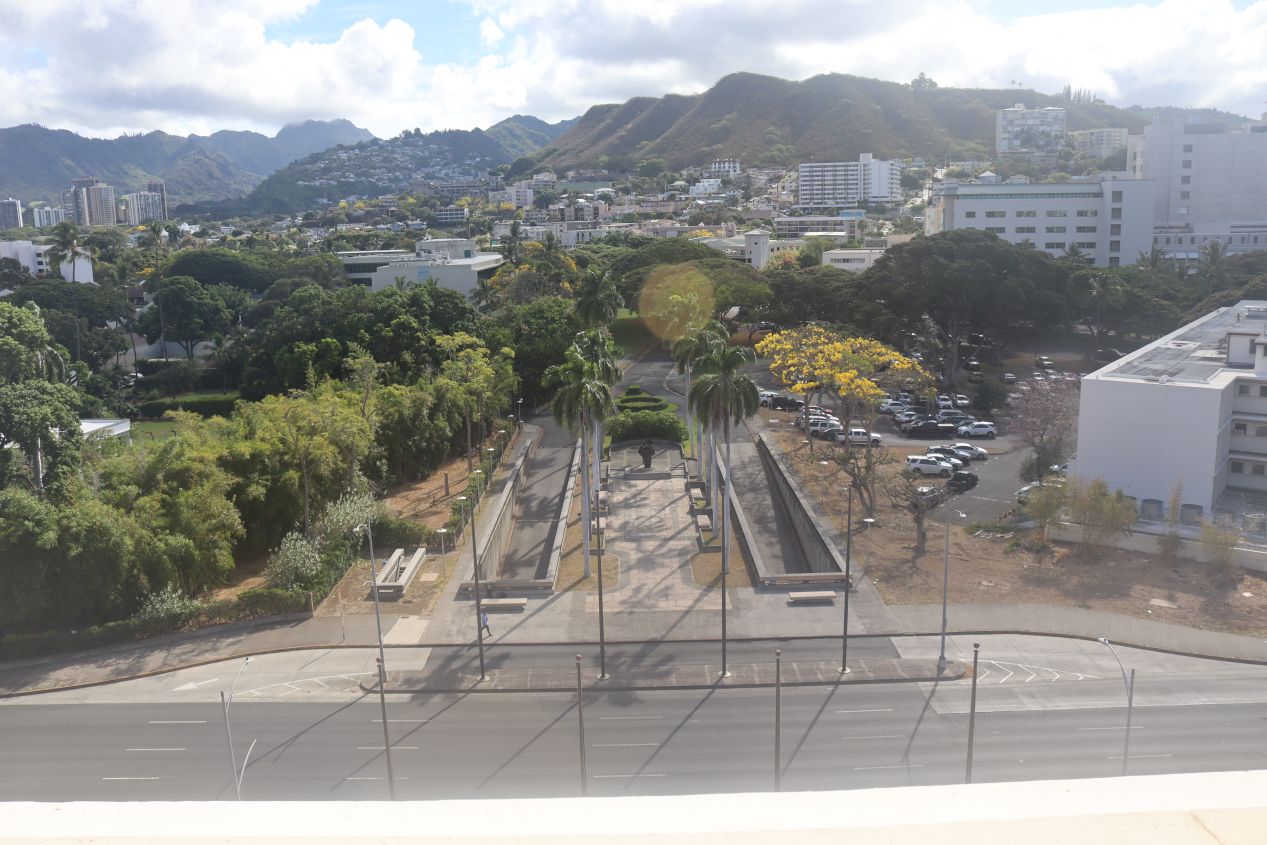


We were able to ride an elevator up to the top floor of the capitol building where we were treated to excellent views looking out over the rest of downtown Honolulu. Off to the north was an eternal flame memorial in the immediate foreground, with Punchbowl Crater and the mountains that formed the central spine of Oahu off in the distance beyond. I hadn't realized that the central portion of Oahu was this mountainous until we visited in person. In the opposite direction to the south was the historic Iolani Palace which we'd be visiting a little bit later and the central business district, with the Pacific Ocean not too far away beyond them. This was the heart of the city and the state capitol building was worth visiting for these views alone.

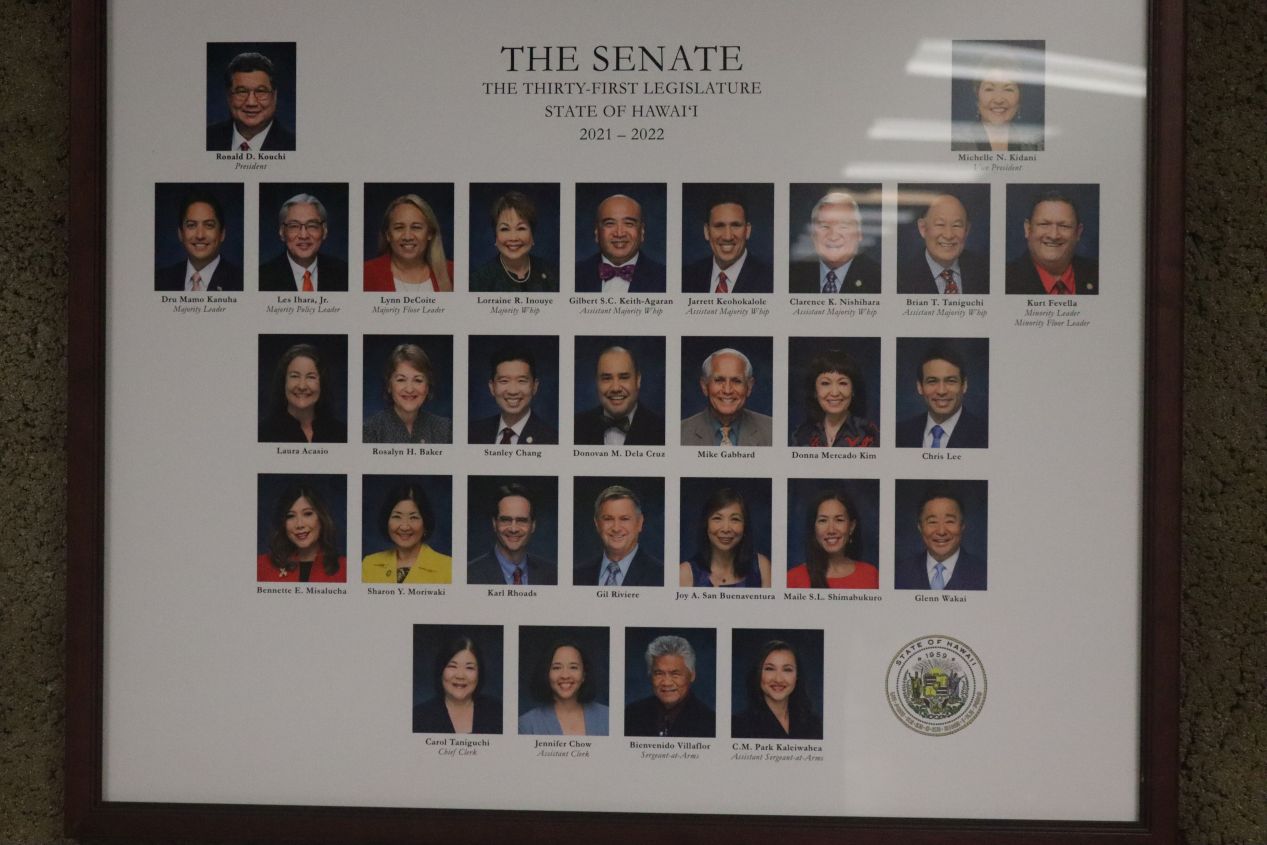


In addition to admiring the scenery on the upper floor, we were also able to descend into the basement where more of the adminstrative machinery for the state capitol building was located. There wasn't too much to see down there and unfortunately the legislative chambers themselves were closed to the public for the moment. I was able to peek through the window and take some shadowy pictures of the two chambers; that's the Hawaiian State Senate captured above with its background mural of traditional Hawaiian artwork. Like many other states, Hawaii's government has a Senate which is exactly double the size of its House of Representatives, with 51 representatives and 25 senators (the odd numbers intended to avoid tie votes). Unlike most other states, the makeup of the state legislature was incredibly Democratic in nature, with 23 Democrats and 2 Republicans in the state senate at the time of our visit in 2022. Hawaii is different from every other American state as Asian and Pacific Islander ethnicities make up a majority of the population with only about a quarter of the population identifying as white. This has resulted in politics which are considerably more liberal than most other parts of the country.

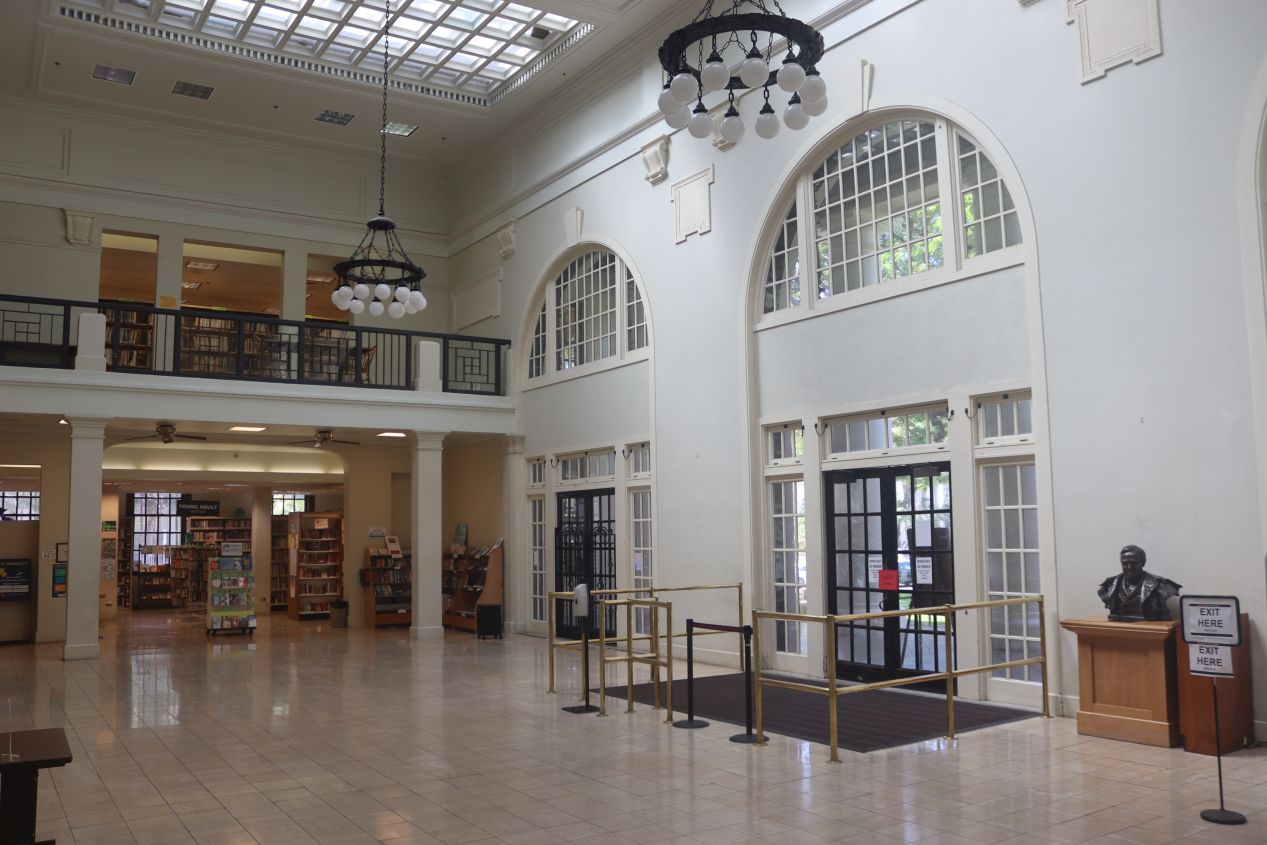


The grounds surrounding the Hawaii State Capitol building were well maintained and featured statues dedicated to some of Hawaii's famous local political figures, such as Queen Lili'uokalani. We found that the Hawaii State Library's headquarters could be found here as well, in a building constructed back in 1911, and popped inside for a bit to take a look around. Hawaii has the only statewide library system in the USA (they are mostly run at the city or county level elsewhere) and holds a collection of more than three million books in total. Liz and I both enjoy visiting libraries, and if this location wasn't quite as fancy as some of the ones that we'd seen elsewhere, it had a warm, pleasant feeling where kids would feel at home coming to find books to read. We enjoyed the benefits of the air conditioning before moving on to our next destination.

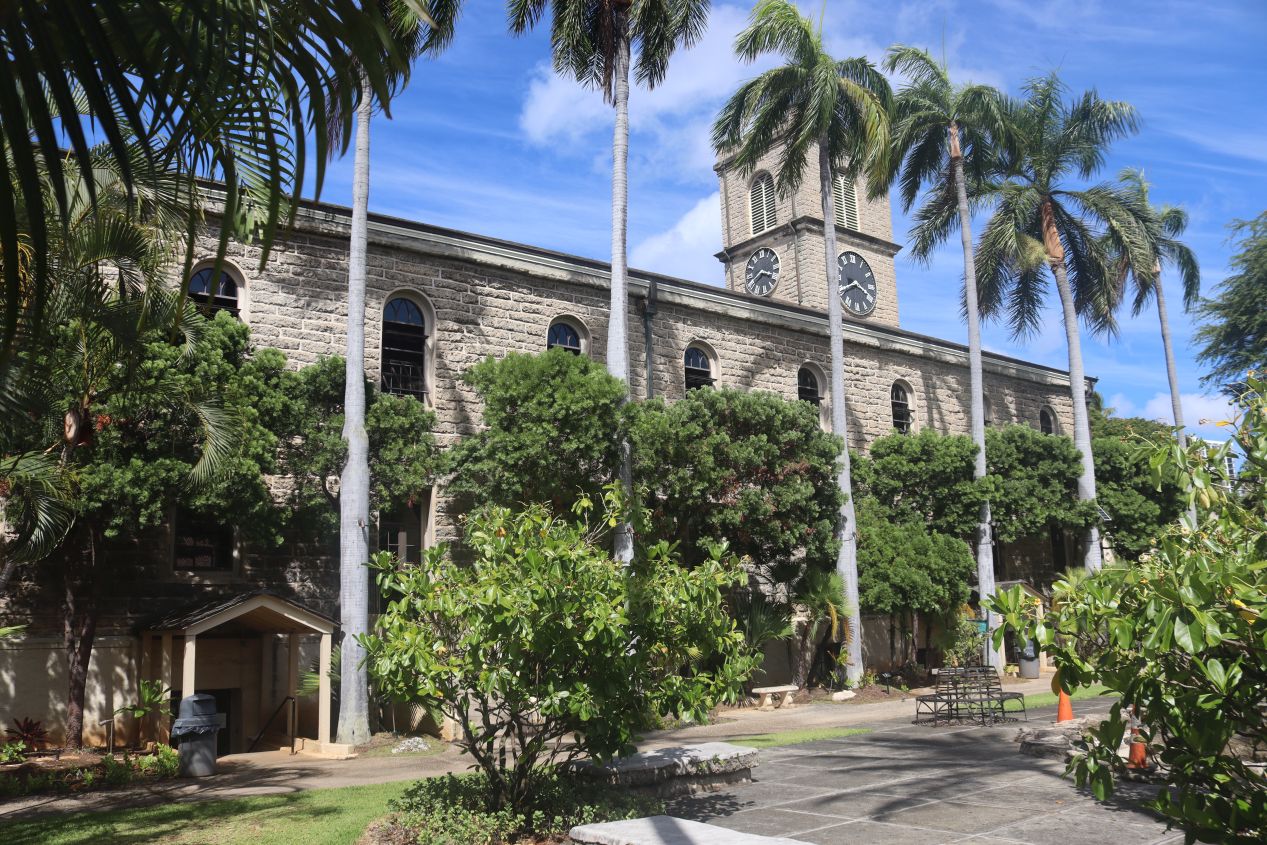


Just across the street was the location of this building, Hawaii's most historically significant church. Known as Kawaiaha'o Church, this was the national church of the Hawaiian ruling family in the 19th century and as such has been described as the Westminster Abbey of Hawaii. It was built from more than 14,000 slabs of coral rock quarried from an offshore reef between 1836 and 1842. This was where four different kings of the Kamehameha family took their oaths of office in the latter half of the 19th century and it remains the oldest permanent church to be found on Oahu. We were able to walk around the exterior of the building but were shocked to find that the interior was closed to visitors. Kawaiaha'o Church is supposed to be open to the public daily and it remains a mystery to me what was going on when we visited. Since I was only able to take poor-quality images of the inside by peering through a window, here's a better photograph of the inside taken from Google Images. I very much wish we'd been able to go inside the church for a closer look!

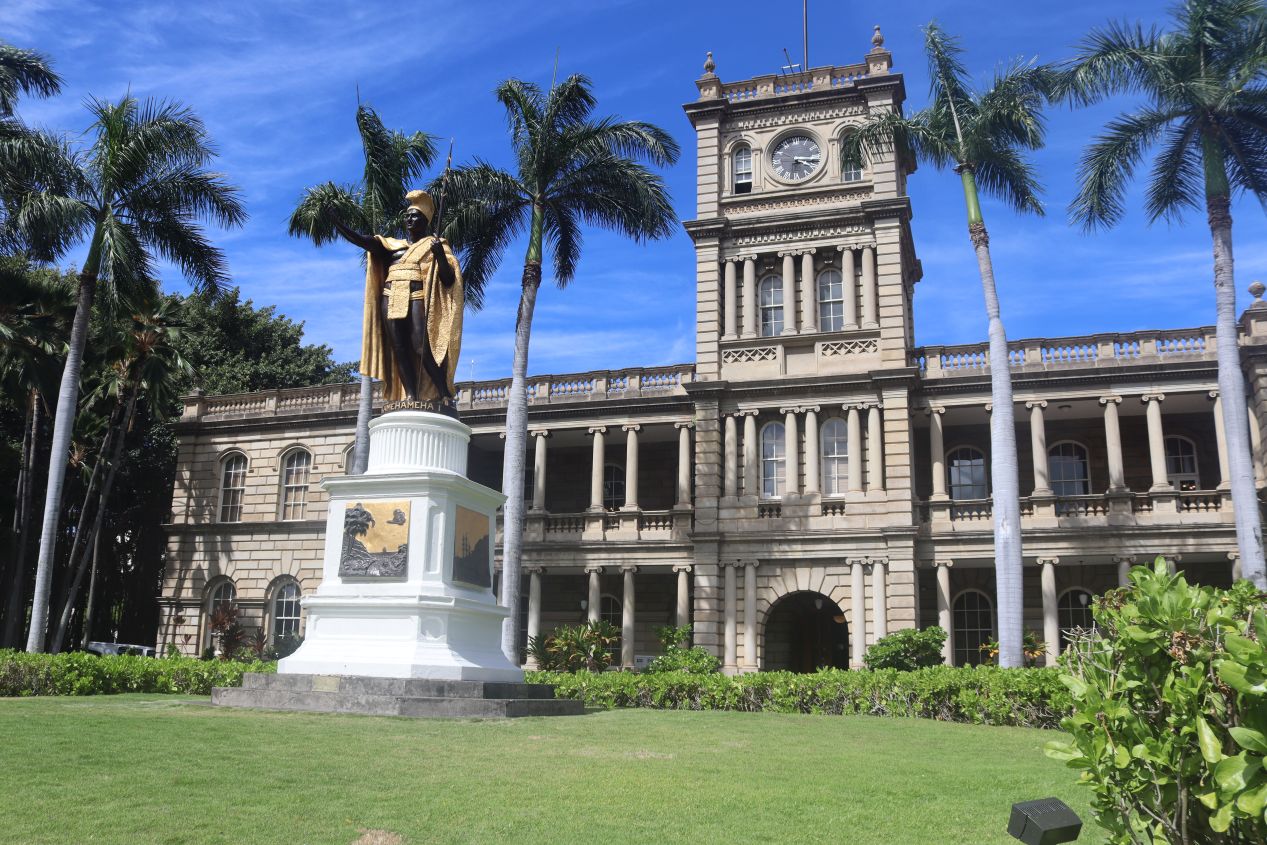


We continued our circuit of the public buildings in downtown Honolulu by pausing to take a few pictures of this structure, the Ali'iolani Hale. This building was the former seat of government for the Kingdom of Hawaii when it was an independent nation and currently holds the Hawaiian Supreme Court inside. It was originally built during the 1870s to serve as a palace for the Hawaiian royal family (thus the luxurious Italian Renaissance design) but was converted into a government building instead by King Kamehameha V since there was a desperate need for more administrative space. Today it's probably best known for hosting this statue of King Kamehameha I which was comissioned in the late 19th century. There are several copies of this same statue that we saw elsewhere, including one in the Statuary Hall in the national Capitol building back in Washington DC. As for the other building pictured above, this was a former barracks which had been repurposed into the visitor center for the Iolani Palace where we were heading next. We had to stop in here to pick up the tickets that we had reserved for our tour of the palace.

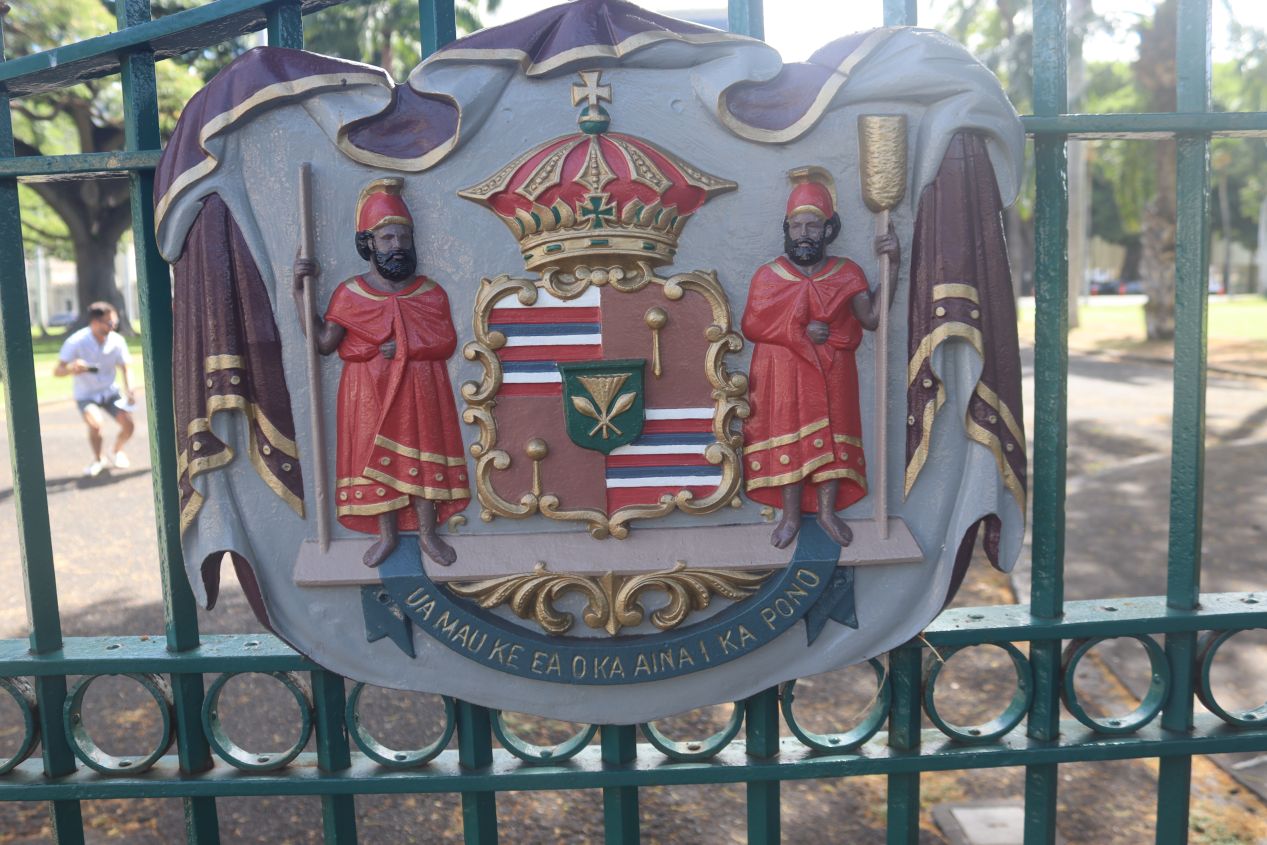


This was the aforementioned Iolani Palace itself, the residence of the Hawaiian royal family during the final decades of the 19th century until they were overthrown in 1893. Honolulu had become the seat of government for the Hawaiian kingdom in 1845 but the royal residence had become rather outdated by the 1870s, especially in comparison to the royal palaces found elsewhere around the globe. The Hawaiian ruling family therefore set in motion construction for a new residence which was completed in 1882 and took over the preexisting name of the Iolani Palace from its older predecessor. Later, this building would serve as the seat of local government during the period when Hawaii was an American territory and briefly as the state capitol while the building we had just visited was under construction. The palace features a unique architectural style that blends together Italian and native Hawaiian elements into a luxurious 19th century residence. Unfortunately for them, the Hawaiian ruling family would control the Iolani Palace for barely a decade before the monarchy was overthrown; this remains the only royal palace to be found anywhere on American soil. We were visiting on a Tuesday because that was the only day of the week that allowed tours of the interior - anyone interested in visiting should make sure to book tickets well ahead of time since there are limited spaces available.

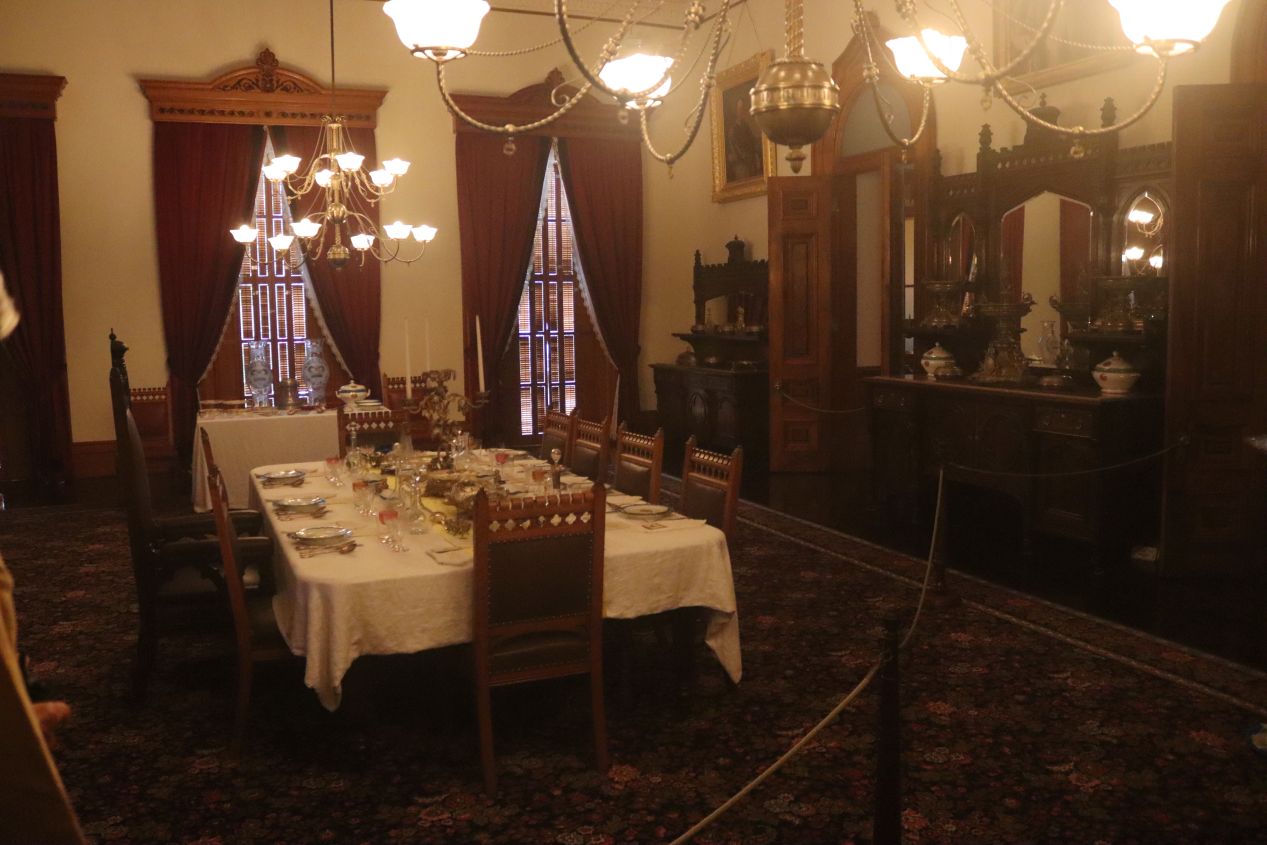


These are some pictures from the interior of the Iolani Palace taken on the ground floor; visitors were given an audio tour that did an excellent job of walking through the history of the palace and the Hawaiian royal family that inhabited it. Several of the Hawaiian monarchs traveled to Europe during the 1860s and 1870s and they were clearly inspired by the other royal families that they encountered there, with many of the decorations at the Iolani Palace influenced by the French aesthetic associated with Napoleon III's reign. The standout feature of this ground floor was a huge central staircase made of native koa wood flanked by a formal dining room and a throne room for holding official audiences. The Hawaiian monarchs seemed to prefer wearing military-style uniforms which wouldn't have been out of place in contemporary Austria or Prussia.

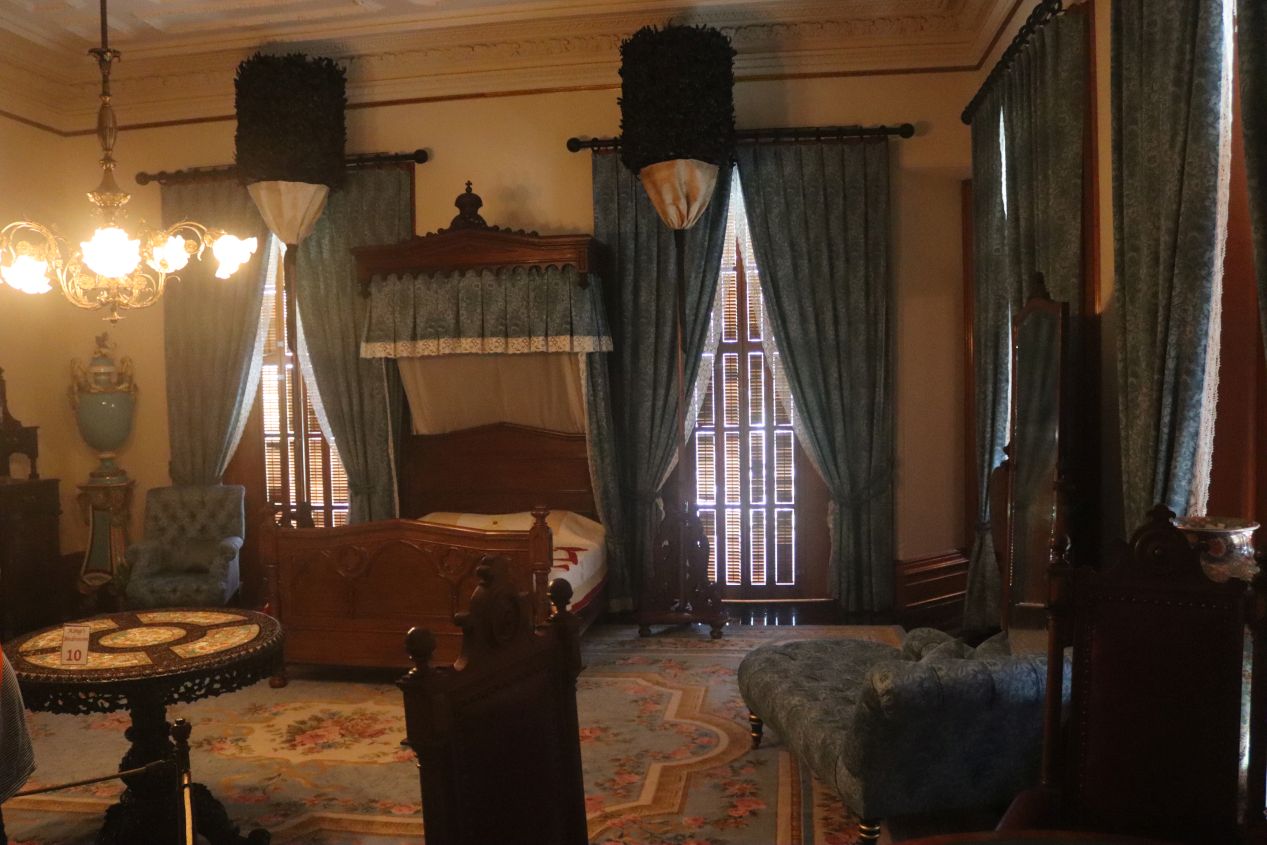


The second floor of the palace held the living quarters and bed chambers for the royal family, places which wouldn't have been accessible to visitors at the time. There were gaming parlors here (complete with decks of playing cards that had the faces of the monarchs on them!) and a brief exhibit on some of the formal dresses worn by the queen for her public appearances. The audio tour also walked visitors through the sad fate of Hawaii's native ruling family who essentially ran afoul of American businessmen. King Kalakaua had previously been forced to sign an unpopular measure known as the Bayonet Constitution in 1887 which stripped away most of the power from the monarchy and disenfranchised most native Hawaiians in favor of wealthy Americans and Europeans who had come to the islands. Queen Lili'uokalani attempted to restore power to the monarchy and strip away the privileges of the non-native Hawaiians with a new constitution in 1893, which led to her being overthrown in a bloodless revolution almost immediately. Control of Hawaii passed into the hands of the ominously-named Committee of Safety which was run by wealthy American businessmen, who successfully managed to have the islands annexed by the United States in 1898. Queen Lili'uokalani spent several years imprisoned inside the Iolani Palace to prevent her from becoming a symbol of Hawaiian resistance to the new regime. All in all, this was a pretty low point in American history that deserves more recognition outside Hawaii.


On a less depressing note, we had lunch after finishing up our tour of the Iolani Palace and downtown Hawaii had lots of food options to choose between. We decided on a little Japanese hole-in-the-wall place named Ma'Ona Musubi which was serving all sorts of takeout platters and sushi wraps. The food here was both delicious and cheap, a great choice for a day on the go like this one.

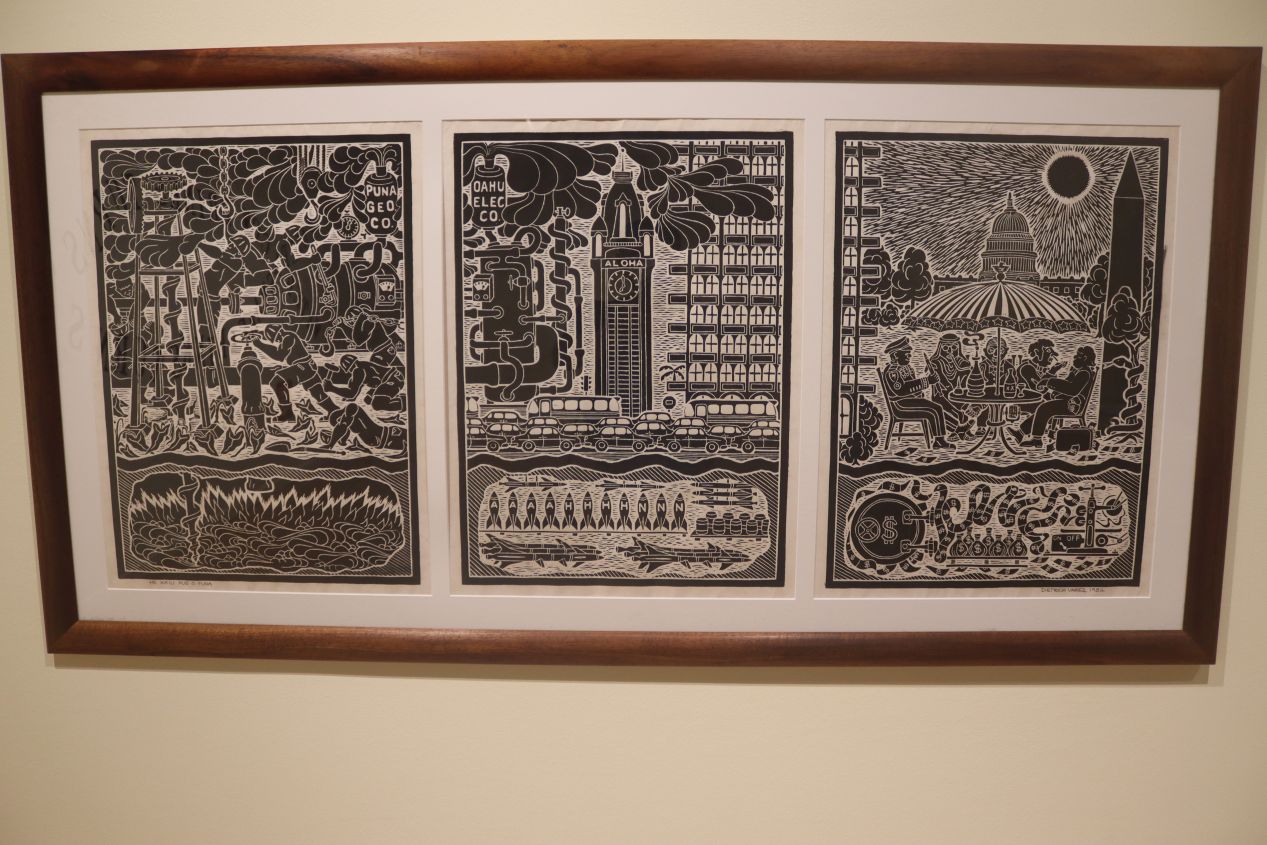


Next up after lunch, we walked over to the nearby Hawaii State Art Museum. Located in the former Armed Services YMCA Building, the state art museum dates back to 1928 and reflects a mix of Hawaii's ethnic and cultural traditions through 132 works of art by 105 different artists. Admission was free and the staff couldn't have been nicer to visitors, happy to explain the three main galleries in additional detail. With that said though, the art in this museum was kind of... weird. Much of the artwork comprised different forms of protest from native Hawaiians about the exploitation of Hawaii's people and natural resources, many of which took bizarre shapes or used surrealistic imagery. I was almost certainly not the target audience for these art pieces and this wasn't my favorite museum to visit. The Honolulu Museum of Art is supposed to be a more traditional art gallery which we did not end up visiting as it was a few blocks away out of the downtown.
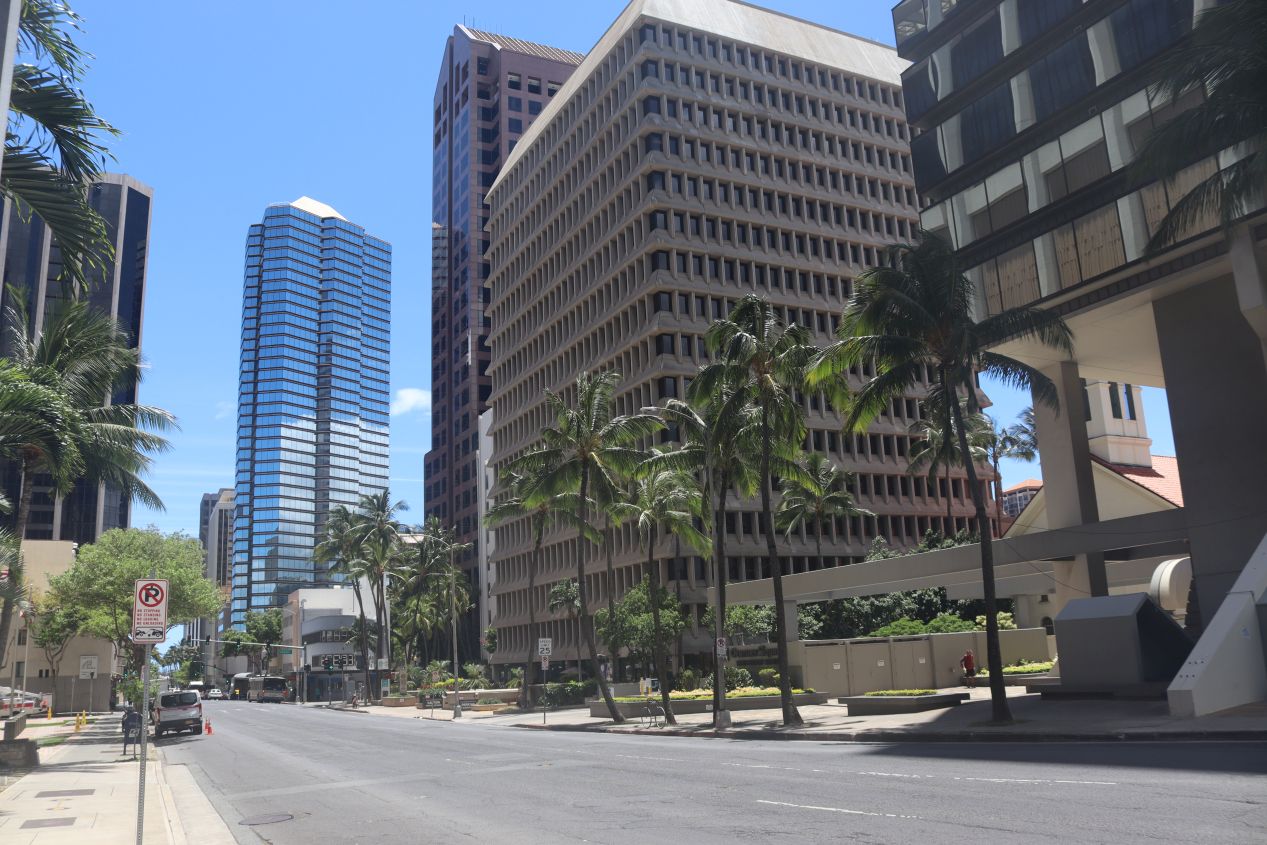
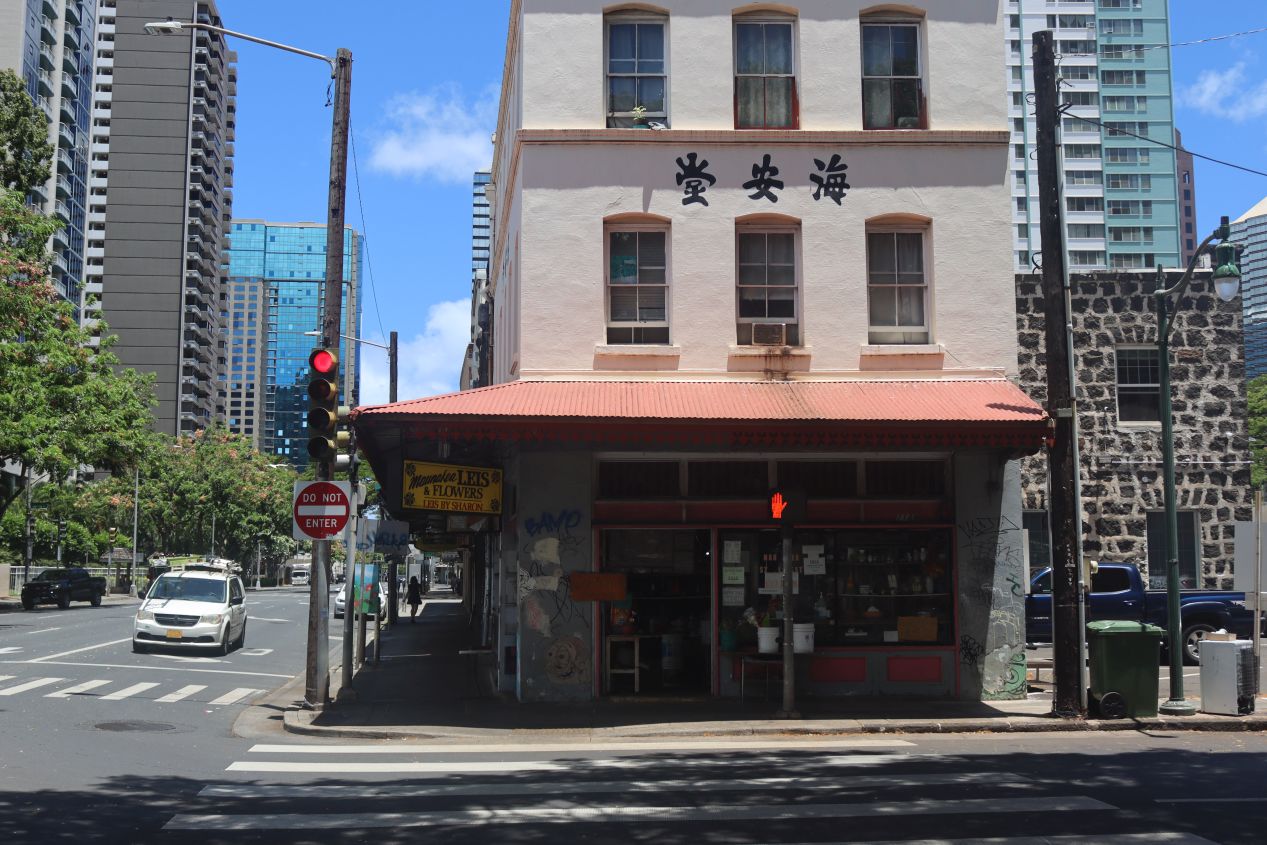


We continued walking westward from the central portion of Honolulu and a few blocks were enough to bring us into Honolulu's famous Chinatown district. The city has had a substantial Chinese presence essentially since its founding, as Chinese laborers were brought to Hawaii in the 19th century to work on the sugar plantations. The Chinatown distict was full of historic buildings and even the street signs in the area were bilingual with both English and Chinese characters. However, the Chinese residents of Honolulu tended to be some of the poorest members of the city and thus Chinatown has long had a reputation for crime that the city has struggled to shake. We could see some evidence of this poverty on display as we passed by the Taoist Lum Sai Ho Tong temple and the Buddhist Kuan Yin temple. I would have liked to enter these places but they had already closed for the day despite the early afternoon hour.

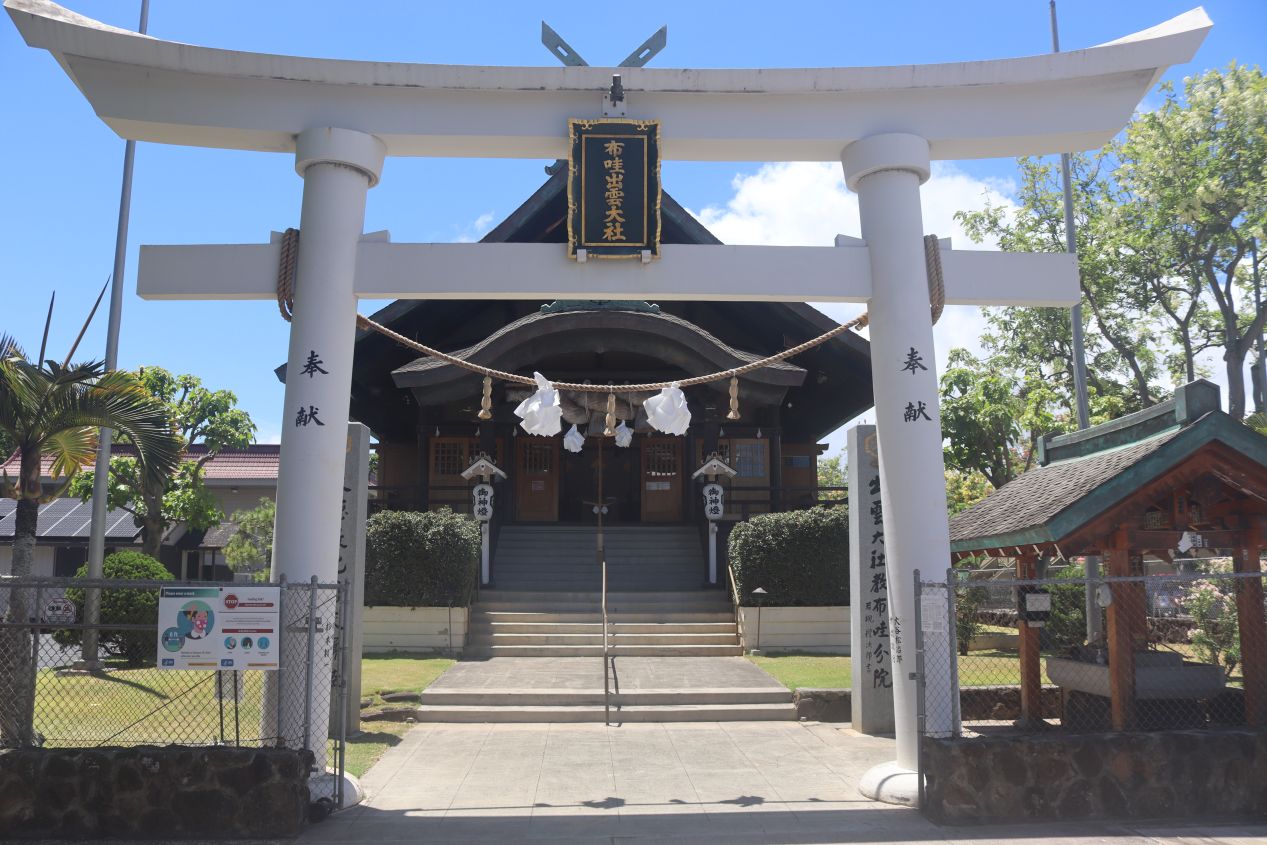


We had more luck at the Izumo Taishakyo Mission, a Shinto shrine located on the other side of the canal from the previous two temples. The Izumo Taishakyo mission dates back to 1904 and has been serving the local Japanese community in Hawaii since its inception. This place of worship had all of the features of a traditional Shinto shrine, from its arched gateway to the ropes supporting a bell outside the entrance to taiko drums stored on the inside and wooden ema for writing prayers to the local kami. Liz had been to many Shinto shrines during her previous trips to Japan and was happy to walk me through the customs associated with visiting. There was even a small gift store attached to the side of the shrine where we purchased a couple of small souvenirs to help support the shrine. This was probably the highlight of our visit to Chinatown even though it wasn't Chinese at all.

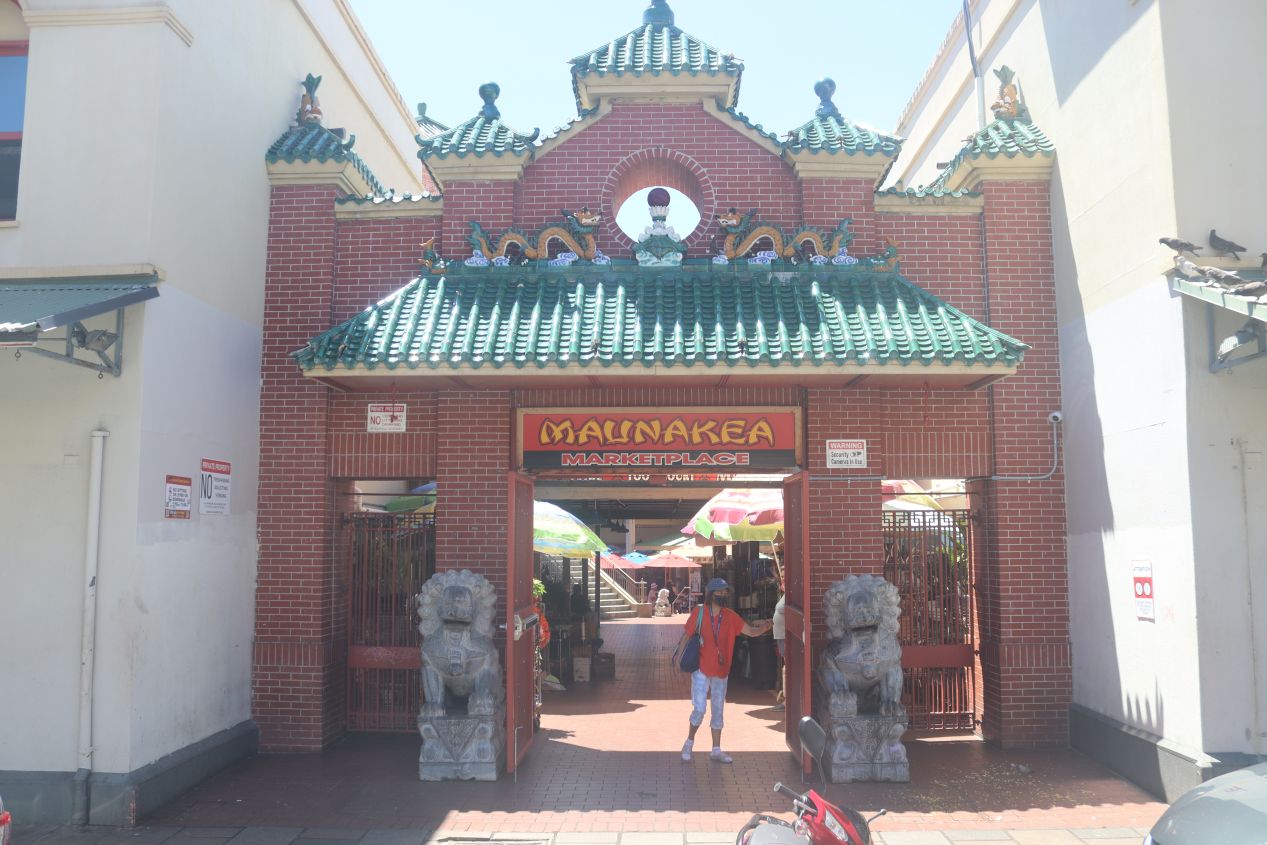


The streets of Chinatown were a bit of a maze and we wandered around without any particular destination in mind for another hour. We passed through the Chinatown Cultural Plaza which had a connection of some kind to Taiwan followed by visiting the Maunakea Marketplace. (We would visit the real Mauna Kea itself on the Big Island of Hawaii about a week later.) It wasn't particularly crowded in the marketplace on this Tuesday afternoon and there was plenty of time to stop for a snack and get something cool to drink from one of the local vendors. This definitely felt like more of a working class area, i.e. a real marketplace and not something phony intended for tourists to gawk at.

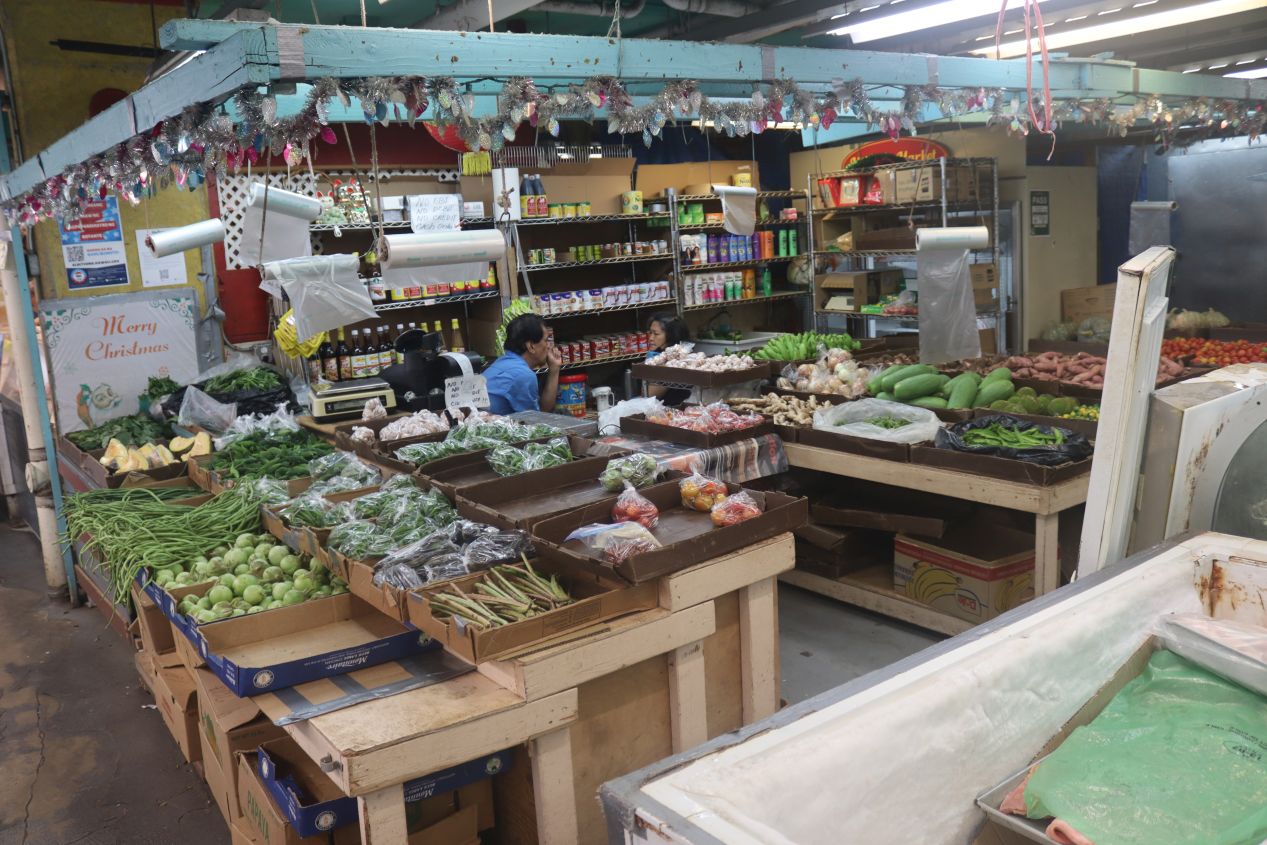


These were a few more pictures taken while exploring Chinatown, this time from the Oahu Market a few blocks further to the south. Several of these markets were beginning to close for the day as we passed through and as tourists without a real kitchen there wasn't much that we could purchase in the way of fresh fruits or meats. I think that we both appreciated the chance to spend some time visiting the Chinatown district while also acknowledging that fact that there wasn't too much here which would constitute a traditional tourist attraction. Neither of us speak an East Asian language which also limited our engagement to some extent.

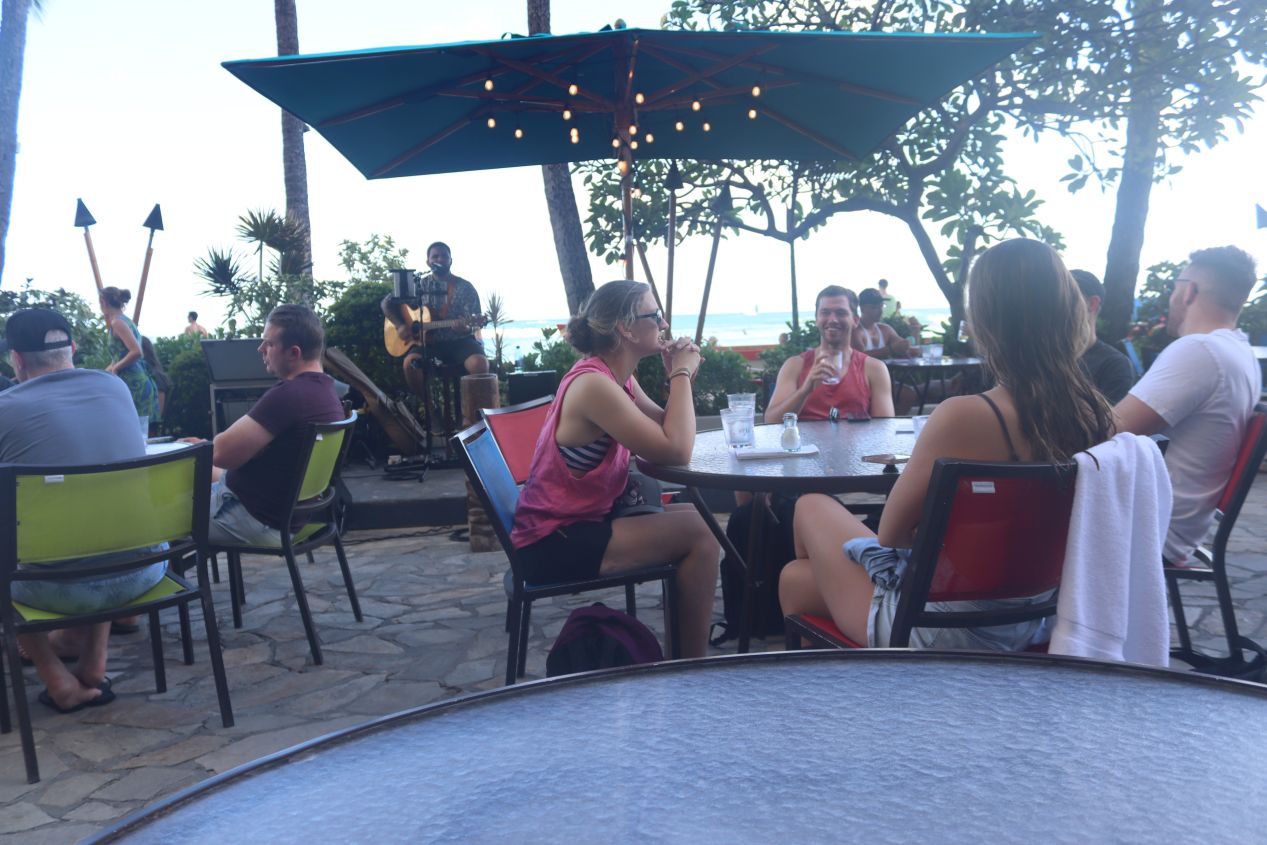


We took the bus back to Waikiki and headed out for an early dinner along the beachfront. Our goal was eating dinner at the restaurant known as Duke's Waikiki, located along the waterfront close to where we had taken a ride on the catamaran the day before. Duke's is one of the older and more famous restaurants to be found in Waikiki, and despite our early arrival there was already a wait of more than an hour for dinner inside the restaurant itself. However, we found that there was only a minimal wait to eat outside in the patio area where we had a view of the beach - an even better option! There was live music playing in the background and we were able to watch the sun set over the water for a perfect ending to the day. I ordered the ribs and chicken combo while Liz had this chicken + salad pairing that she was raving about for the rest of our vacation. In other words, the food was excellent here and certainly lived up to the restaurant's reputation.

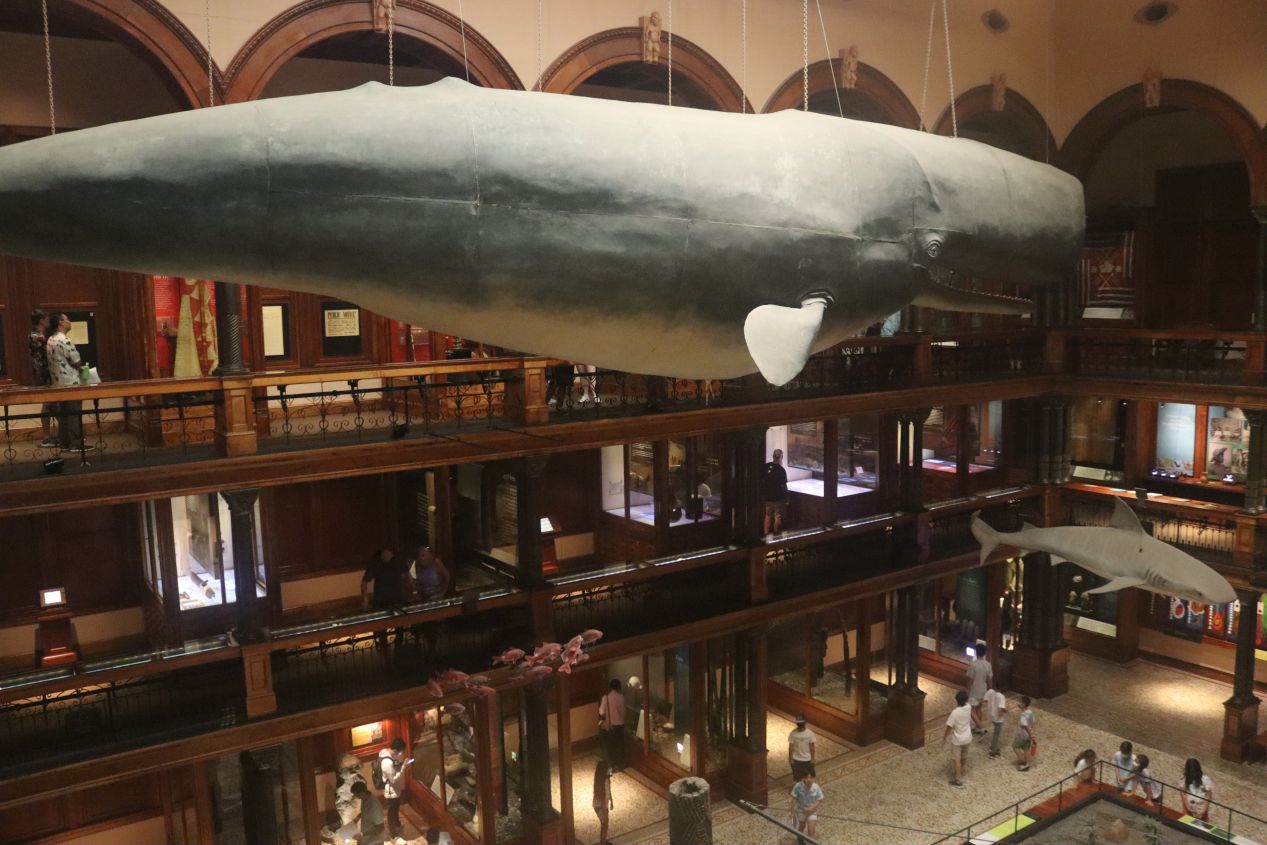


That was the end of our main day visiting downtown Honolulu. However, we had a free morning during our final day on Oahu and made a stop en route to the airport at the Bishop Museum (with our luggage in tow). Located about halfway between the central business district and the airport, the Bishop Museum is Hawaii's preeminent museum for natural and cultural history. The museum boasts the world's largest collection of Polynesian cultural artifacts and has one of the best specimen collections of any museum in the whole United States. It was named after Princess Bernice Pauahi Bishop who was a member of the royal Hawaiian family and dedicated in her honor by her husband after she passed away. These are some pictures from the main hall in the oldest part of the museum which traces the history of Hawaii from its earliest human inhabitants up through the present day.

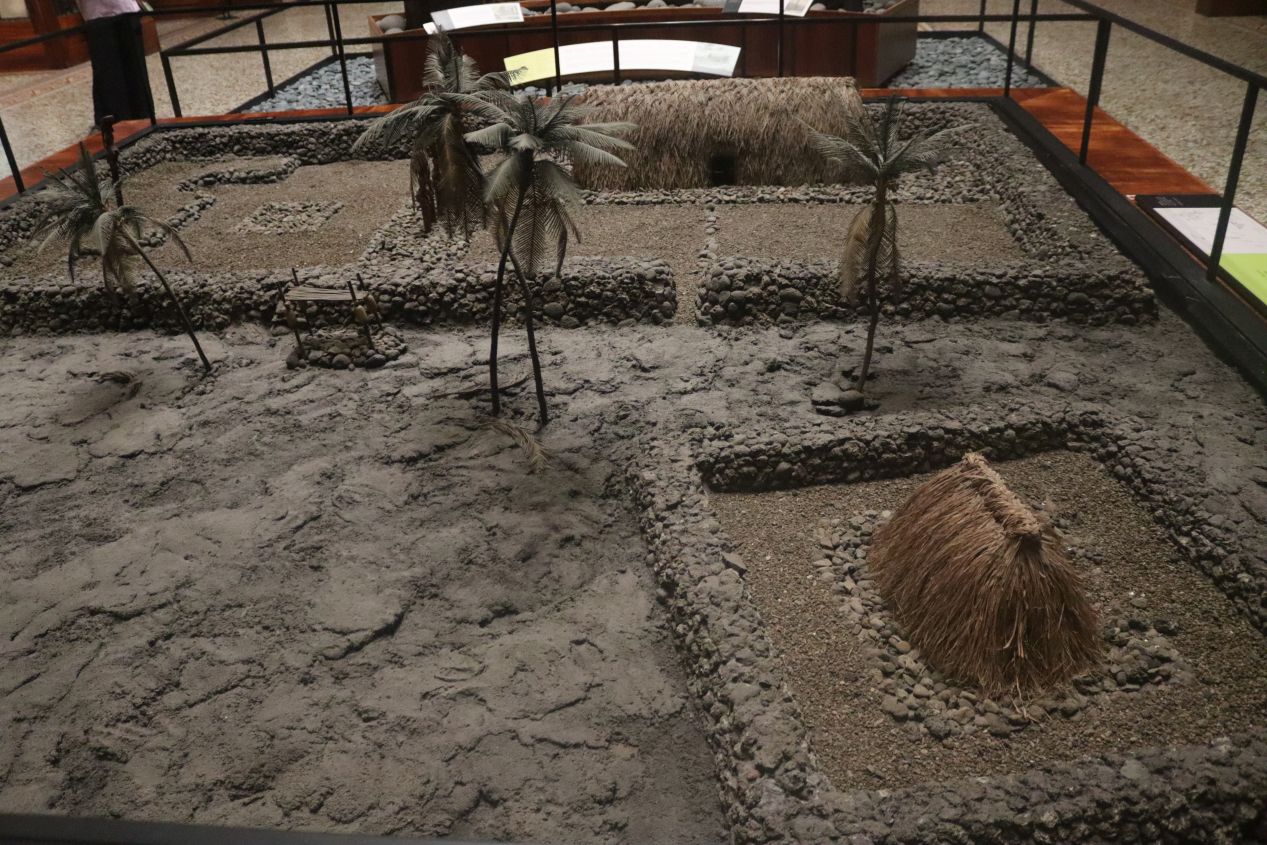


As mentioned above, the Bishop Museum specializes in Hawaiian and Polynesian culture which are almost always overlooked in the rest of the United States. There were recreations here of traditional Hawaiian living arrangements, canoes, totemic figures, and other cultural artifacts. This is a part of the world that I don't know that much about and it was fascinating to hear more about the peoples of the Pacific islands. I loved the map showing the settlement of Oceania which was an absolutely incredible undertaking by the Polynesians, traveling thousands of miles across open ocean in their boats. People didn't arrive in Hawaii until about 1000 AD (and similarly until around 1200 AD in New Zealand) which means that these were some of the very last places on the globe to be inhabited by humans. I was also very interested in the difficult transition to modernity faced by Hawaiians in the 19th and 20th centuries as the islands very rapidly went from traditional lifestyles into an industrial world full of colonizing empires. The Hawaiian monarchs were faced with an impossible dilemma: how to preserve their culture and traditional identity while also not falling prey to imperial powers like Britain or Japan or the United States? There were no easy answers here and the Hawaiian islands transformed at an incredible pace in the years between 1800 and 1900.

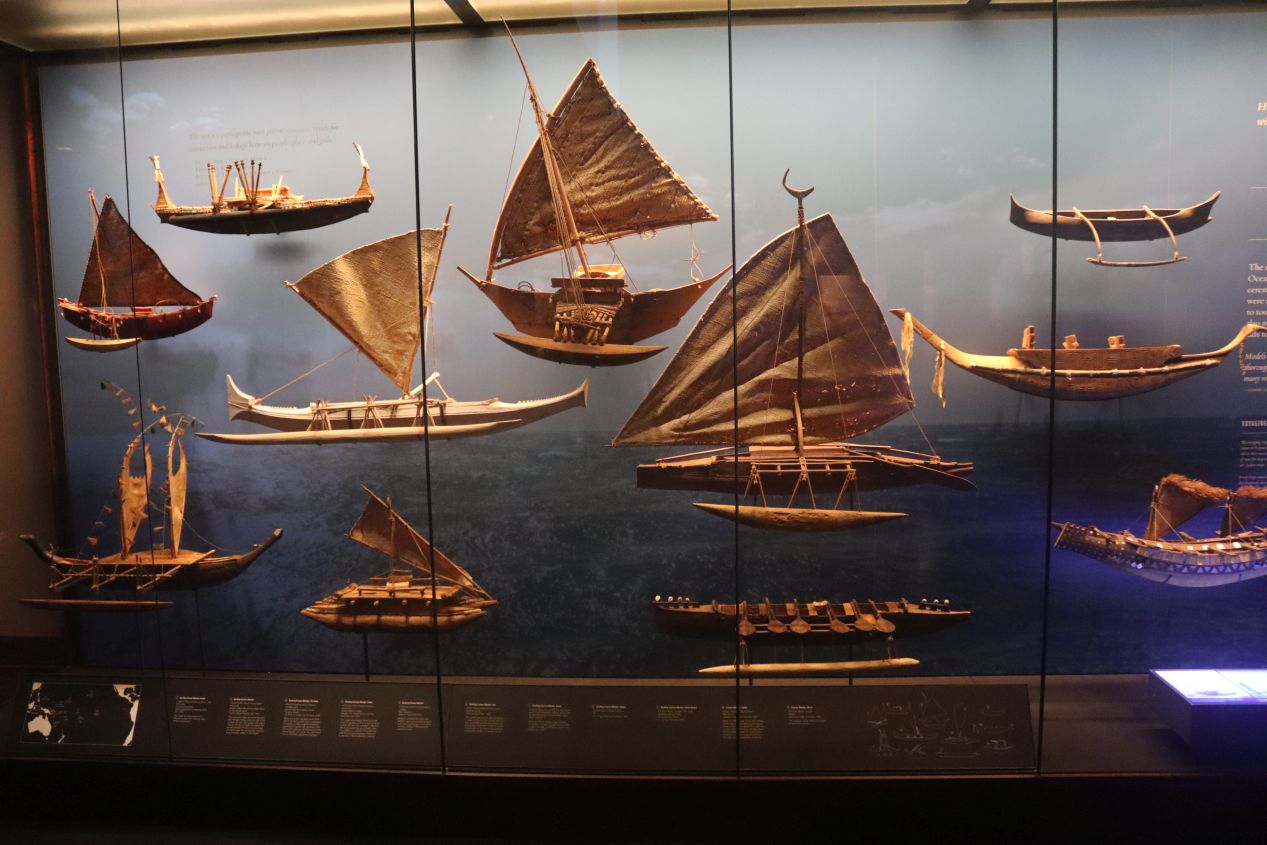


I think that I could have spent all day at the Bishop Museum but we only had a few hours before our flight to the Big Island and therefore had to pick and choose between the museum's highlights. One hall here was entirely focused on the different peoples of the Pacific Islands, going into more detail that I'd ever seen before about the cultures in Samoa, the Cook Islands, Tahiti, the Solomons, and so on. This was all new information to me that I can't recall any other museum covering. A picture gallery in the center of the museum featured different 19th century artwork, with my favorite being a landscape painting of Waikiki looking at Diamond Head from 1863. It was amazing to see what the same area had looked like more than 150 years earlier before a single hotel had been built along the beach. Then there was a room dedicated to showcasing the kahiki or feather standards used to indicate high status in traditional Hawaiian society. These had been born by attendants of the royal family and various ali'i (roughly chiefs) throughout the islands. Finally there was a temporary exhibit here showcasing the tattoo artistry of various Polynesian groups using modern photography. I'm not a fan of tattoos for myself but there was some serious inking skill on display in these images.

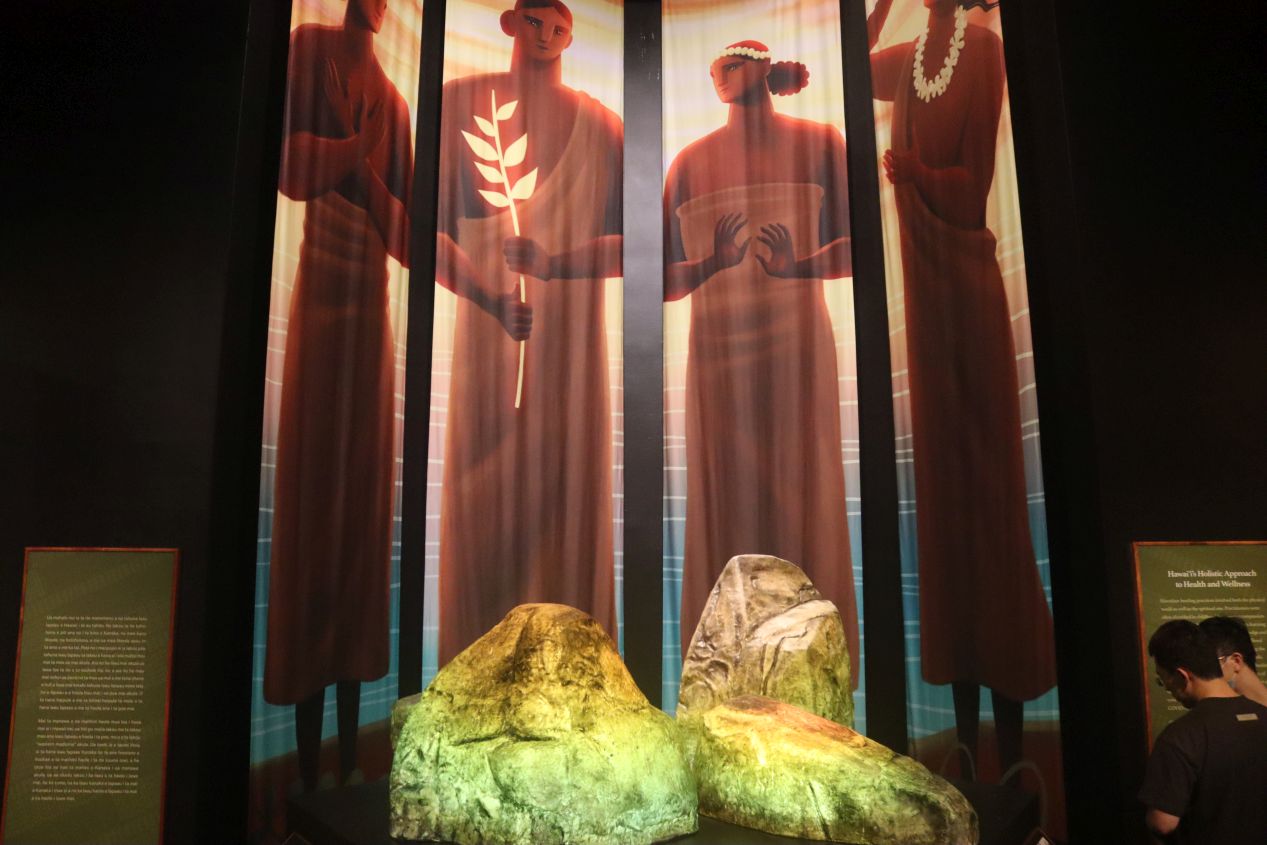


There are several different buildings that make up the Bishop Museum's complex, including a science center and a planetarium that we weren't able to visit due to lack of time. The one other building that we were able to see was the Castle Memorial Building which hosts various traveling exhibits that come to the museum. At the time of our visit, this was a temporary exhibit about the healer stones of Kapaemahu which are the subject of a local Hawaiian legend. As the story goes, four quasi-divine figures known as mahu came to Oahu and brought the healing arts with them. Before leaving the island, they imparted their healing powers to these four stones, which really exist and can be found in a small protected monument in Waikiki. (We would have gone and seen them if we hadn't heard about the healing stones as the literal final thing we did before flying off the island.) Perhaps the most interesting part of the story was the fact that the four mahu were deliberately identified as neither male nor female, instead having aspects of both traditional genders. The exhibit at the Bishop Museum used this as part of a larger emphasis on gender in Polynesian culture, noting that many groups across the Pacific do not adhere to a strict binary division of gender. In an era where the LGBTQ community has come under renewed persecution, it was good to see museum exhibits like this pushing back against the belief that there has only ever been and can only ever be strictly male and female genders.
The Bishop Museum was the last attraction that we were able to visit before concluding our stay in Honolulu. For our remaining two days on Oahu, we would be renting a car and driving around to the other parts of the island, specifically the the Windward Coast to the northeast and then the North Shore on the other side of the island. We had several more beach days ahead before boarding a plane and hopping over to the Big Island of Hawaii for the second half of our vacation.



